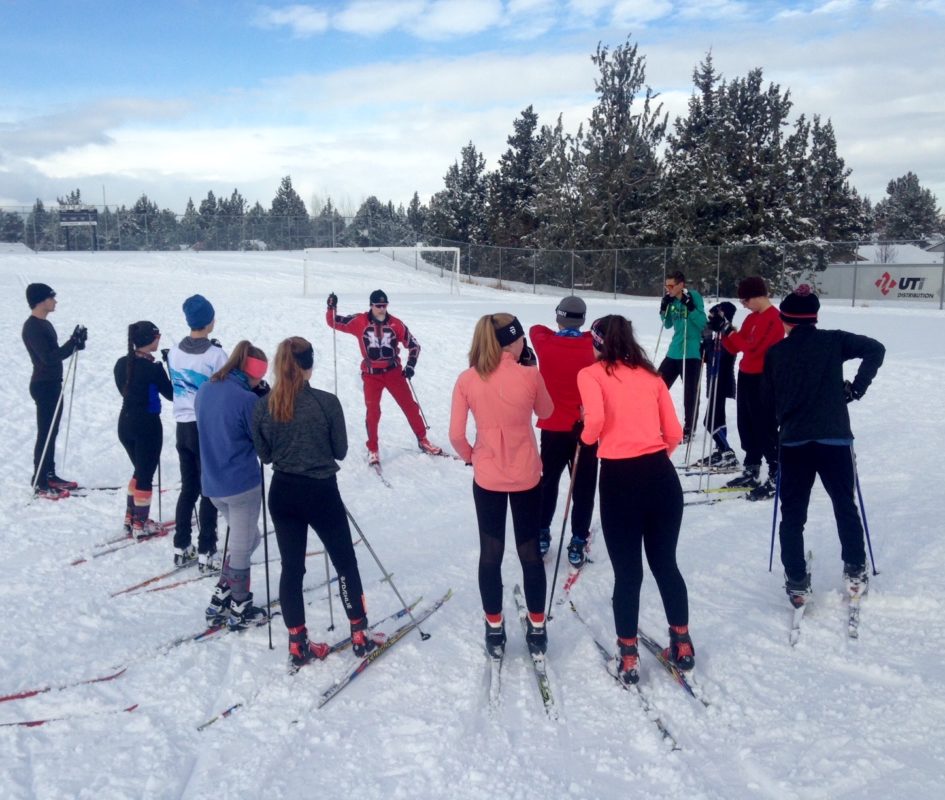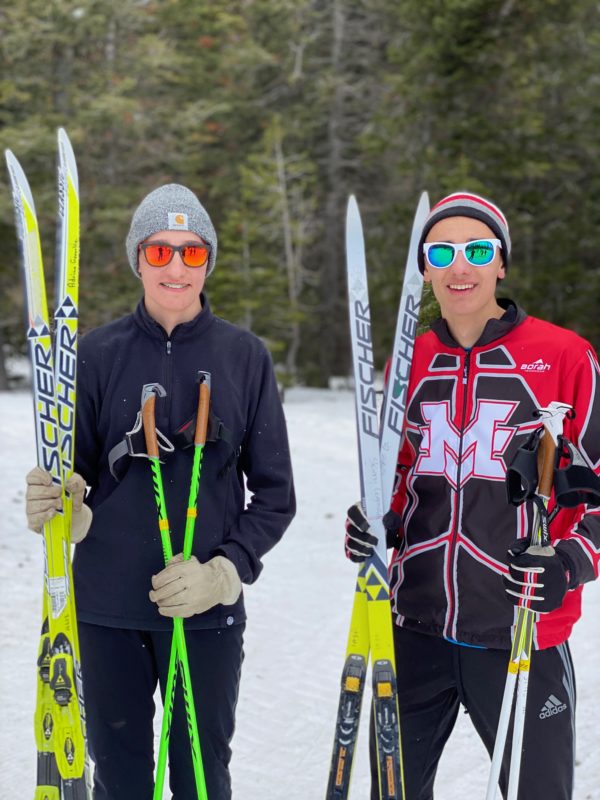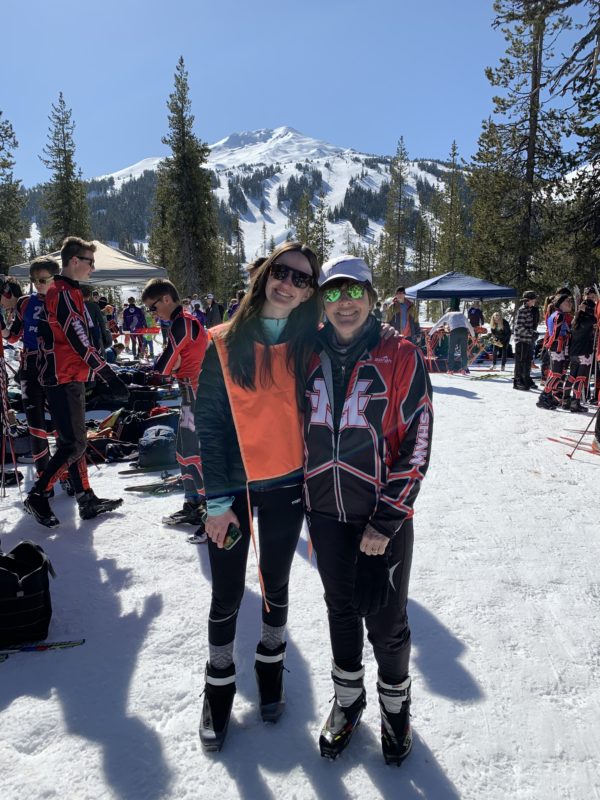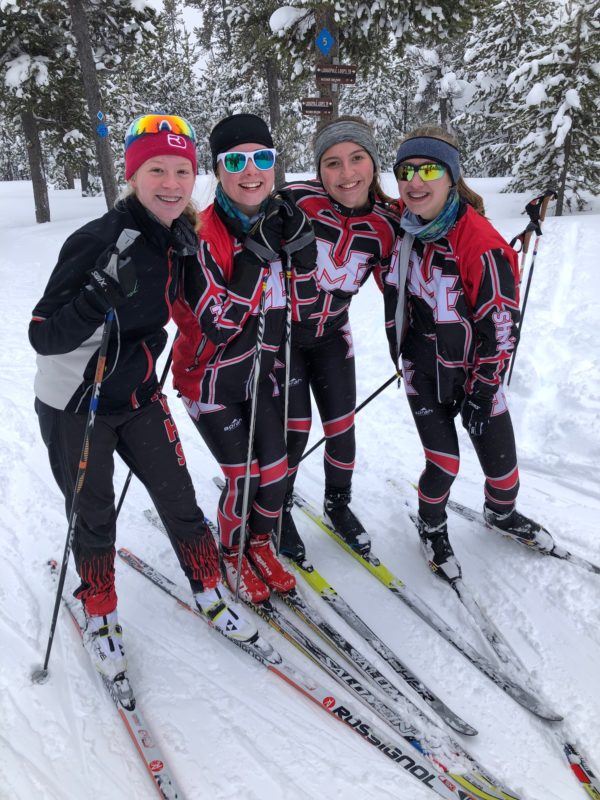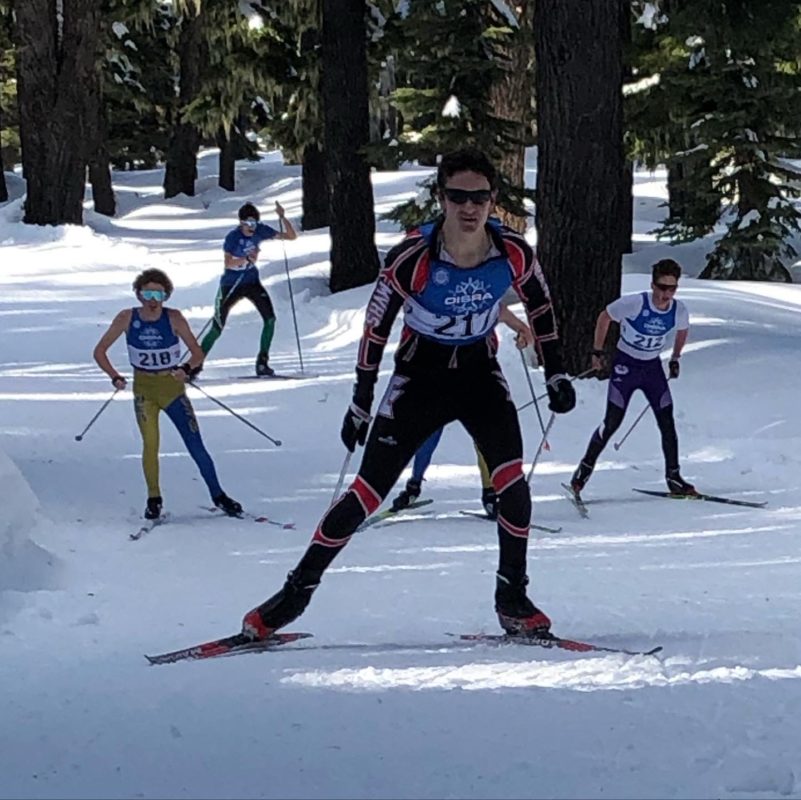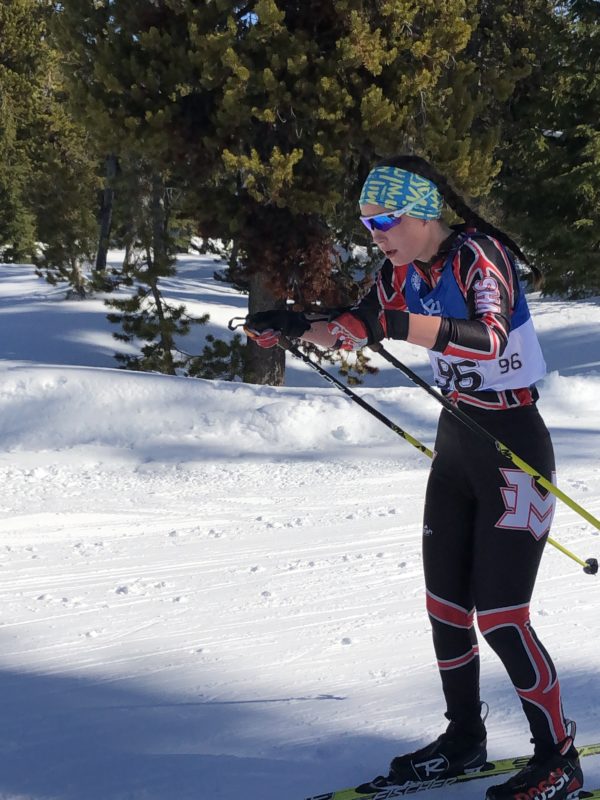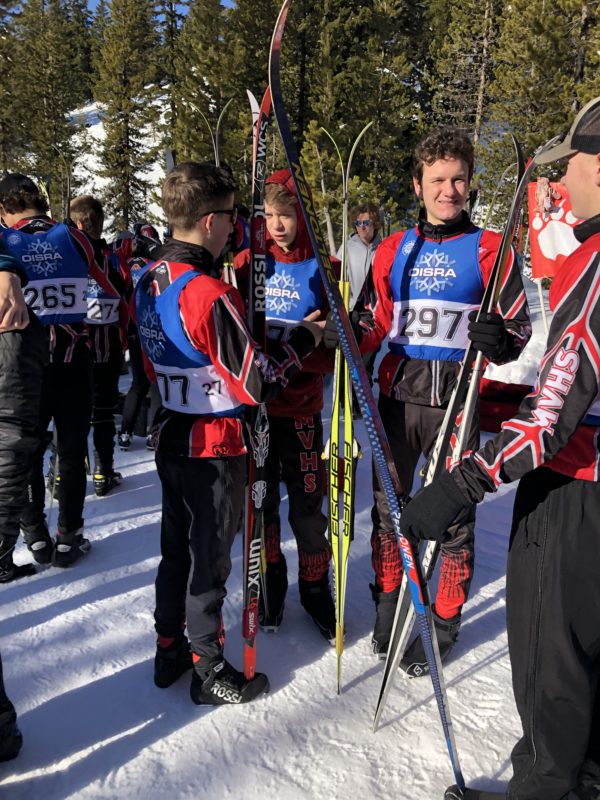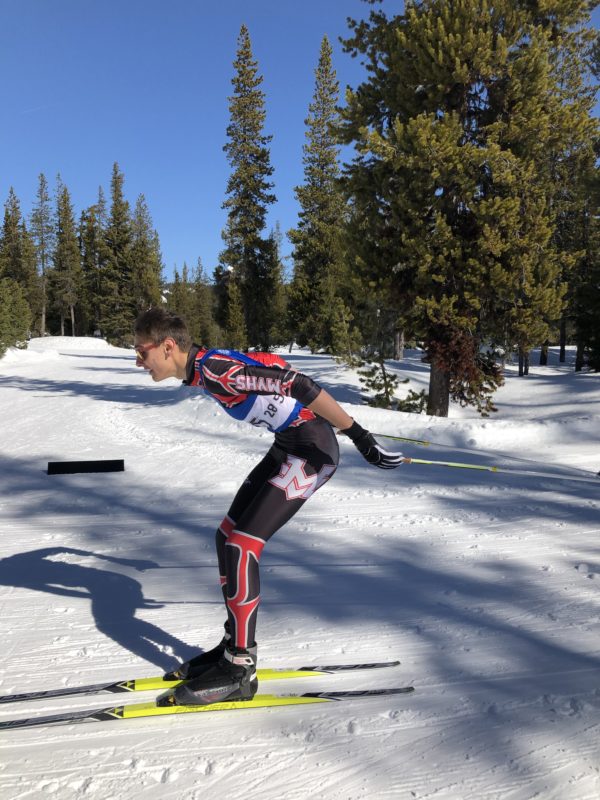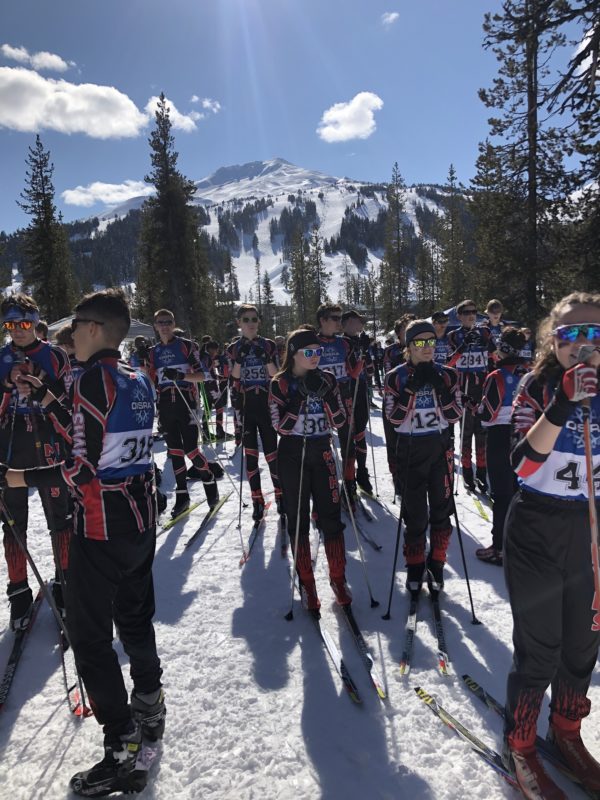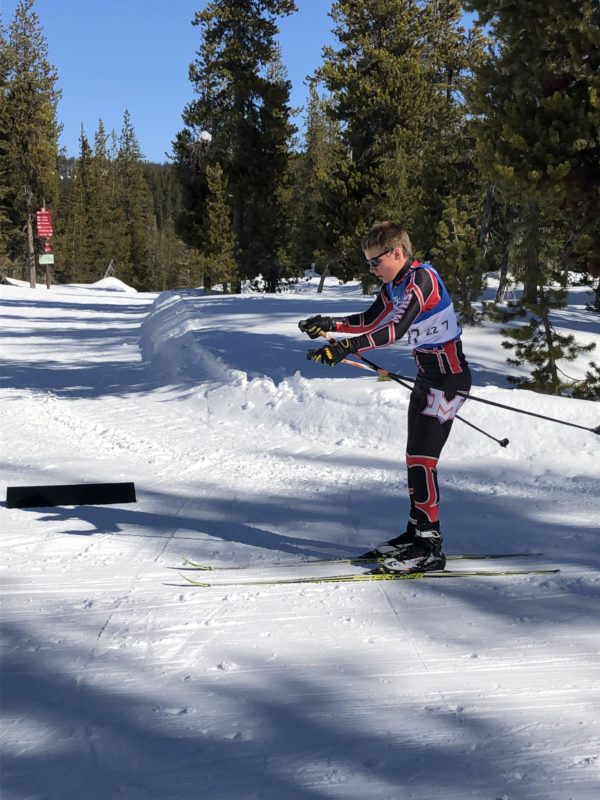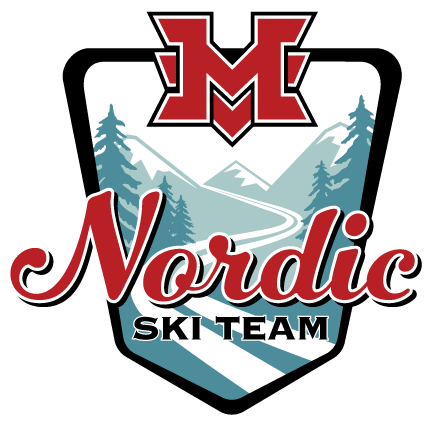Nordic Division COVID-19 Guidelines (as of Nov. 15, 2020)
Summary of changes to Version 2 of “Nordic Division COVID-19 Guidelines.” Changes will be in green italics.
Section Summary of change
Overview: These recommendations do not prevent teams from using more strict or conservative approaches
Mask Wearing: On 11/11/20, CDC reports that masks do benefit the person wearing the mask.
Pods: OISRA recommends having pods for carpooling.
Definition of “Close Contact”: In definition of “close contact,” the 15-minute exposure is now defined as being “cumulative within a 24 hr period.”
Symptoms of COVID-19: Clarified primary and secondary symptoms, and suggest seeing medical provider if have any other symptoms that are concerning to you.
OVERVIEW:
Covid-19 has presented the world with unprecedented challenges. Globally, we have been forced to learn to live with the virus until better treatments or a vaccine are developed.
Because of the pandemic, OISRA has decided to shift its focus this season. Instead of working toward providing a state championship event, OISRA will focus on helping kids stay active safely.
We are lucky that skiing is a low-risk activity for virus transmission because it is an outdoor, no-contact sport. But gathering in groups to improve skiing skills adds some level of risk. This level of risk depends on how active the virus is in the local community. If there is community spread, then the risk of transmission cannot be zero.
But the risk can be minimized. The Oregon Health Authority (OHA) sets up public health protocols to minimize community spread so that Oregon’s businesses, schools, and other activities can reopen safely. They have mandates for community actions, and they have metrics that measure the effectiveness of those community actions. Based on their data, the community spread in most counties is still too high to allow all schools and students to return to in-person instruction, but OHA does allow high school ski team activities to take place.
As an organization OISRA is obligated to follow the OHA-mandated requirements for our activities, just as businesses are required to follow OHA regulations for their activities.
In the big picture, the collective actions of the larger community determine if the community spread is low enough for OHA to continue allowing our ski team activities. Hopefully, the larger community is committed to doing their part.
OISRA is committed to controlling virus transmission within the smaller communities of our ski teams. These OISRA guidelines follow the OHA mandates and we are expecting compliance from coaches, 2 students, families, and volunteers. We ask that everyone generally acts as if they are infected and take precautions, so they do not cause anyone else to become infected. The bottom line is that we all must protect each other as well as ourselves. These guidelines do not prevent teams from adopting even more strict or conservative approaches than those mandated by OHA or recommended by the OISRA Nordic Division.
If you are not willing to comply with these OISRA COVID-19 Guidelines, this may not be a season for you to join a ski team. You will be respectfully asked not to participate this season if you are violating these guidelines.
Our goal is to enjoy being outdoors together! We greatly appreciate your understanding and support to achieve this objective in spite of the unprecedented challenges!
REQUIREMENTS:
This document is a living document. It will be updated and changed as we continue to learn more and whenever OHA and ODE change their information.
The governing authority that allows OISRA to offer skiing as a team sport during the pandemic is the Oregon Health Authority (OHA). The OHA Dec. 3rd directive allows training, conditioning, and competing for K-12 non-contact, outdoor sports.
- OHA requirements will be followed:
- Comply with applicable Oregon Department of Education Guidance
- Discourage vulnerable people from attending OISRA activities
- Ensure athletes and spectators wear a mask or face covering
- Communicate guidelines to students, families, coaches, and volunteers
- Promote good hygiene – wash hands (use sanitizer), avoid touching face (eyes, nose and mouth), and cough or sneeze into bent elbow or tissue
- Maintain physical distancing
- Observe gathering capacities
- Limit travel groups and enforce mask wearing in travel groups
- OHA recommendations will be followed:
- Encourage athletes to bring own water and food
- Stagger arrival and departure times for larger groups
- Refrain from physical contact
- Minimize travel time
- Minimize spectators and people gathering
- Assign physical distancing monitors at gatherings
Repeat the message of 3 W’s often.
Wear a mask
Wash your hands
Watch your distance
DO IT ALL !!!
OHA Public Health Protocols
- Coaches will educate skiers/families/other coaches/volunteers when to STAY HOME to prevent spread of the virus.
- Educate everyone about the signs of COVID-19. Primary symptoms: shortness of breath, difficulty breathing, persistent new cough, fever of 100.4 F, chills, new loss of taste/smell; secondary symptoms: muscle pain, sore throat, undiagnosed rash or sores, diarrhea, and vomiting.
- Coaches will emphasize: Do not come to a ski activity if you feel sick. The symptoms listed above do not include all possible symptoms for when you should stay home when you do not feel well. Call your medical provider if you have other symptoms that are concerning to you.
- CDC (Centers for Disease Control and Prevention) requires people to quarantine for 14 days if they have been in close contact (within 6 feet for at least 15 minutes, cumulative during a 24 hr period) with a positive COVID-19 case.
- OISRA is requiring skiers to show the coach written documentation after a quarantine period or if having symptoms. The documentation can be EITHER
- WRITTEN proof of negative test OR
- WRITTEN permission from a physician to return to ski team activities (strenuous exercise).
- CDC (Centers for Disease Control and Prevention) requires people to quarantine for 14 days if they have been in close contact (within 6 feet for at least 15 minutes, cumulative during a 24 hr period) with a positive COVID-19 case.
- Although the CDC considers a 14-day quarantine to be the safest option to prevent the spread of COVID-19 to others, if a person has not had any symptoms, the CDC says they may consider ending quarantine early. A skier can return to ski team activities:
- After ten (10) days of quarantine,
- If they can show the coach a WRITTEN proof of a negative COVID test OR
- If they can show the coach WRITTEN permission from a physician to return to ski team activities (strenuous exercise)
- After seven (7) days of quarantine,
- If they can show the coach WRITTEN proof of a negative result from an antigen or polymerase chain reaction (PCR) test that was administered less than 48 hours before they end quarantine
- If they choose to shorten their quarantine period, there is a small chance they may spread the disease to others post-quarantine, it is critical that they continue monitoring their symptoms for 14 days. If the student does develop symptoms, they should continue to avoid going to ski team activities and call their healthcare provider to discuss testing.
- Teams will screen participants for all gatherings – in-person meetings, training and time trials. These attendance/screening records can be used for contact tracing. Include any family members, volunteers, and all coaches who are present at the event on these records.
- Required to keep records for at least 4 weeks.
- Required to include a column that shows you have assessed if people meet the health criteria for attending ski team. Recommend having a column for checking when students leave training, so all students are accounted for at any activity.
- ➢ Optional column for recording temperature. Note that readings with non-contact infrared thermometers (NCIT) can be affected by the ambient environment and head coverings, making them less reliable in a situation where a person is bundled up and riding in a heated car.
- Coaches are required to remove someone from an activity if they show signs of becoming ill during the activity
- If a skier, volunteer, coach, or spectator displays symptoms of COVID-19, they will be asked to leave the area of the activity. Give them a clean mask if they do not have one.
- If a student is not able to drive themself, their family will be contacted and the student will be isolated from the rest of the group until transportation can be arranged.
- OISRA is requiring skiers to show the coach written documentation after a quarantine period or if having symptoms. The documentation can be EITHER
- WRITTEN proof of a negative test result OR
- WRITTEN permission from a physician to return to ski team activities (strenuous exercise).
- Coaches are required to inform Vulnerable Populations
- Vulnerable individuals are defined by CDC as people aged 65 and older and those with serious underlying conditions, including high blood pressure, chronic lung disease, diabetes, obesity, asthma, and those whose immune systems are compromised such as by chemotherapy for cancer and other conditions such as therapy.
- Coaches should tell vulnerable individuals that they are at higher risk for severe illness from COVID-19 and that NFHS (National Federation of High School Associations) recommends they do not oversee or participate in high school sports workouts.
- All participants are required to maintain Physical Distancing and follow Mask Wearing protocols
- OHA requires wearing a mask or face covering when participating in an outdoor sport when six (6) feet of distance cannot be maintained.
- OISRA does not allow students to wear face shields because of potential for injury during exercise.
- CDC (Centers for Disease Control and Prevention) recommends that gaiters have two layers.
- The face covering is meant to protect other people in case you are infected. People can spread COVID-19 to others even if they do not feel sick. Hand washing and physical distancing are the best ways to keep yourself safe. Wearing a mask can also protect the person wearing the mask.
- Generally, OISRA requires everyone present at a ski team activity to wear a face covering, because at times it will be difficult to maintain the (6) foot distancing. Strive to practice physical distancing AND wear a mask. DO BOTH!
- However, it is not recommended to wear a mask when exercising strenuously. Masks get wet from exhaled breath and sweat during strenuous activity and subsequently may either restrict breathing or become ineffective as a filter.
- For low-moderate exercising outdoors, masks do not have to be worn if a minimum of 6 feet distancing can be maintained.
- For intense exercising (when it is not easy to talk) outdoors, athletes must be able to maintain a minimum distance of 10 feet when they are not wearing a mask.
- Athletes will wear their masks when waiting in a line at the start of a time trial. They will remove their masks when they start and put the mask back on when they have finished. 5
- REMINDER: masks alone are insufficient to provide an adequate level of protection or source control. They should be used in combination with physical distancing and an emphasis on good hygiene practices: hand washing (or using hand sanitizer) and not touching eyes, nose, or mouth. Coaches should stress the three W’s (WASH HANDS, WATCH DISTANCE, WEAR MASKS) whenever they are talking about mask-wearing, so others do not get a false sense of security from wearing a mask. Mask wearing is only ONE PART OF THE PACKAGE of what needs to be done to minimize transmission.
- Everyone should carry extra masks so they can change them if they get wet or soiled. Coaches should have extra masks in case someone forgets their mask.
- Cloth masks must be washed after each use.
- ➢ Physical distance monitors (parent volunteers) can help coaches enforce the physical distance mandate, especially in areas where people may tend to crowd, such as lining up to check in or to go to the restroom.
- ➢ Coaches may want to use a bullhorn or other voice amplification system while wearing a face covering, allowing more distance between them and their athletes and helping their voice carry when athletes are spread out physically distancing.
- Coaches are required to enforce good Hygiene practices: hand washing, avoid touching face (eyes, nose, and mouth), and practice respiratory etiquette
- Students will be encouraged to wash hands or use hand sanitizer frequently
- At the beginning of any meeting, training, or time trial
- After any meeting, training, or time trial, before leaving the premise
- Before and after using a restroom or porta-potty
- Before putting on a mask and before eating
- After they touch surfaces that have been touched by the public
- Students will be reminded not to touch their face, even when wearing gloves
- Students will be reminded to cough into a bent elbow or tissue.
- Students will be encouraged to wash hands or use hand sanitizer frequently
- To the extent possible, coaches should discourage personal contact
- All participants and athletes should refrain from handshakes, high fives, fist/elbow bumps, chest bumps and group celebrations.
- All participants are required to follow OHA Cleaning and Disinfecting Guidelines
- Every effort will be made to avoid having any objects that more than one person would touch.
- Each skier is responsible for their own equipment and handles only their own equipment.
- Each skier brings their own water and food.
- Each skier brings their own hand sanitizer
- Sanitize any shared equipment between uses.
- All screening/attendance records will be handled and stored by only the person taking attendance or dropped in a plastic bag that can be sealed for transport to another person for storage.
- Any timing equipment should be disinfected when handled by more than one person.
- All first aid supplies should be handled by one medic at each event and sanitized if needed between events.
- Sanitizing supplies will be available near restrooms and porta potties, and students can clean surfaces they come in contact with.
- Every effort will be made to avoid having any objects that more than one person would touch.
- Events are required to be organized according to OHA Gathering Capacity Limitations
- Mt. Bachelor has a gathering capacity limit of 100 for an event, including coaches, racers, race help and volunteers. OISRA teams will follow Mt. Bachelor’s, Meissner’s, and other ski venues’ regulations for gathering capacity, their parking rules, and other pandemic rules and regulations.
- Coaches will have a plan to limit the number of people at any gathering. Discourage non-essential people from crowding/gathering in small groups.
- Spectators will not be allowed in the stadium for time trials or clumped together in groups along the course – because they would have to be included in the total number of event participants allowed by the venue.
- On December 3rd, OHA tied maximum gathering capacities to the County Risk Levels, according to a “Sector Risk Level Guidance Chart.”
- All participants are required to follow OHA Travel Guidelines
- OHA requires limiting exposure to those outside the household unit during travel
- For travel groups that include more than one household in the same vehicle, all members of the travel group, including the driver, must wear a mask or face covering and spread out as much as possible within the vehicle (minimum of three (3) feet required between passengers not in the same household).
- Limit travel groups to those who have been in regular contact (e.g. team members). Members of different teams should not travel in the same vehicle.
- Document the names of each travel group(s) and staff including the driver, along with the date and time of the trip and the vehicle number/license. Drivers should store these records.
- Allow drivers to transport multiple travel groups if wearing a mask and sanitizing hands before and after each driving each group. Vehicles must be cleaned between each group following transportation guidelines.
➢ NFHS recommends Cohorting for students who train together.
- NFHS recommends setting up pods of 5-10 students who train together.
- Coach must minimize interaction between students in separate pods.
- Helper coaches should be assigned to the same pod for every practice/time trial.
- Coach must also pay attention to their personal health protocols (physical distancing and hand hygiene) when they interact with students in separate pods.
➢ OISRA recommends Cohorting for students who carpool together.
- Pods for students who train together are difficult to enforce and a well-organized outdoor activity that keeps students physically spaced more than 6 foot apart and wearing masks does not place students in a situation where they are CLOSE CONTACT with someone who has an infection.
- CLOSE CONTACT is defined as being within 6 feet of an infected person, with or without a mask, for more than 15 minutes (accumulated during a 24 hr. period of time).
- Pods are most effective if they are applied to car-pooling situations where students are in an indoor, closed space and closer than 6 feet apart for more than 15 minutes.
- Pods for carpooling are important as a preventative measure for stopping transmission of the virus.
- Information about carpooling pods is the type of information that would be important for contact tracers to have.
OISRA-Nordic specific rules
- OISRA Nordic Division Transportation Rules
- Suspend Nordic Policy, Section II G during the pandemic, and all transportation will be the responsibility of the family.
- OISRA Nordic Division Mandatory Participation
- No amount or type of participation will be considered mandatory for staying on a Nordic team this season. Transportation will probably be an issue for many.
- Suggest having some workouts that students can do at home so they can get in shape without attending dryland practices. Or make some workouts available by Zoom (live and/or taped for those who cannot attend).
- OISRA Nordic Division Academic Eligibility during the pandemic
- OISRA Nordic Division has dropped the academic eligibility requirements for this season because there will be no official competitions. No state championship events will be held.
- OISRA Nordic Division Activities will be held outdoors
- All OISRA Nordic practices will be held outdoors or by Zoom (for dryland practices)
- All OISRA Nordic meetings will be held outdoors or by Zoom
- Cars will be used for shelter, instead of lodges or pop-ups.
- Students will be discouraged from hanging around in groups before or after ski team activities.
- Protocol for OISRA Nordic Time Trials – OHA has confirmed that these guidelines abide by their rules for outdoor K-12 Sports when gathering limits for outdoor K-12 Spots is a maximum of 50. The maximum number of people allowed in the race course area can change if the gathering limits change, based on county risk levels.
- Time trials will be not organized by the established league structures. Teams will plan events prioritized on reducing travel, rather than based on the league structure.
- Each athlete will be assigned a bib they use all season – no bib distribution or collection
- All participants who enter the race course area will keep all their personal belongings (extra clothing, water bottle, food, etc.) in a backpack or plastic bag that is clearly marked with their bib number that can be easily read when viewed from a distance.
- Time trials will be freestyle only – will not be waxing for classic technique
- A total of no more than 12 adult volunteers (including coaches) will be positioned WITHIN the race course area – at the start area or finish area or along the race course. The volunteers will time the event, will have medical supplies, and will be present for safety as the skiers race on the course. All volunteers and coaches will follow all applicable OHA guidelines for wearing masks and physical distancing outdoors.
- There will be an “entrance gate” where ALL participants (coaches, volunteers, and racers) will enter the ski course area. Each person’s presence at the race course area (and their assessment for COVID-19 medical compliance) will be noted when they enter at the entrance gate.
- All participants will maintain 6-foot distancing when gathering OUTSIDE the entrance gate.
- All participants will maintain a 6-foot distance from others at all times while in the race course area.
- In the event of an injury, the medical first responders will follow OHA protocol for first responders
- For the competition, racers will line up 6 feet apart behind each other at the start line and will leave the start line in 30-second intervals, with the fastest skiers starting first.
- A different time interval can be used if using another time interval maintains the goal that skiers should not be overtaking other skiers during the race.
- All participants will wear masks. However, the racers will be allowed to remove their mask after they start, because they will be strenuously exercising and their exhaled breath could dampen a mask and make it non-effective. Racers will put their masks back on when they complete the course.
- Due to participant exhaustion and heavy breathing, the finish area has a high potential for spreading virus. The finish area must be of adequate size to facilitate distancing of at least 6 feet as numerous racers may finish in close proximity. As quickly as reasonably possible, racers must put a mask on and move beyond the finish area to facilitate proper distancing for all finishing racers.
- Teams will move through this time trial course in such a way that there are always less than 50 people in total (including the adult volunteers) WITHIN the race course area at one time.
- “Blocks of time” of approximately 2 hours per team of approximately 35 racers per team can maintain a 50-person maximum occupancy limitation.
- “Blocks of time” for each team can overlap by approximately 30 minutes if racers leave the race course area as soon as they finish racing so that racers and coaches on a team in the next “block of time” can start entering the race course area to warm up prior to the racer’s start times.
- The number of racers, coaches, and volunteers will not be monitored when they are OUTSIDE the race course area. They will be guests of the ski area when they are OUTSIDE the race course, and the ski area follows any OHA occupancy rules that apply to public outdoor areas.
- No on-site awards
- No group food or beverages
OISRA-specific rules
- OISRA Rules for Returning to Activity after a COVID-19 Infection
- An athlete with COVID-19 must be cleared by their primary care provider prior to returning to ski team activities. A primary care provider must give them written permission to return to STRENUOUS EXERCISE.
- No exercise is recommended for 14 days from diagnosis and 7 days after all symptoms have resolved.
- Returning to activity should be in phases, with athlete being monitored for symptoms of dizziness, difficulty breathing, chest pain/pressure, decreased exercise tolerance, fainting.:
- Phase 1: At least two sessions of light aerobic activity (up to 70% maximum heart rate) for up to 15 minutes. Sessions should be at least 24 hours apart. Activities may include brisk walking, light jogging or using a stationary bike. No strength training.
- Phase 2: At least one session of aerobic exercise (up to 80% maximum heart rate) for up to 30 minutes. Simple movement activities such as running drills may be added to increase level of difficulty. No strength training.
- Phase 3: At least one session of exercise (up to 80% maximum heart rate) for up to 45 minutes. May add some simple sport specific activities and strength training to increase level of difficulty.
- Phase 4: At least two sessions of sport specific training (up to 80% maximum heart rate) for up to 60 minutes. Sessions must be at least 24 hours apart.
- Phase 5: Resume normal training activities and duration for at least one session.
- Phase 6: Return to competition with no restrictions. •
- Reminders for OISRA pre-season requirements during the pandemic
- Coaches must have processed school agreement forms, registered online, and completed all required training courses before working with students –
- Schools that have not opted to use the #3 school agreement form in the past may want to use that form this season, because the students will not be representing the school in official competitions. This season will be a practice season. Also, schools are taking on additional liability because of COVID-19 and they may not want to extend their liability coverage and oversight for COVID-19 to clubs.
- The #3 form clarifies that a school is not providing any oversight, funding, or resources – and the team is not representing the school.
- Students must have registered online and met the requirements for a sports physical before participating –
- Coaches must have processed school agreement forms, registered online, and completed all required training courses before working with students –
